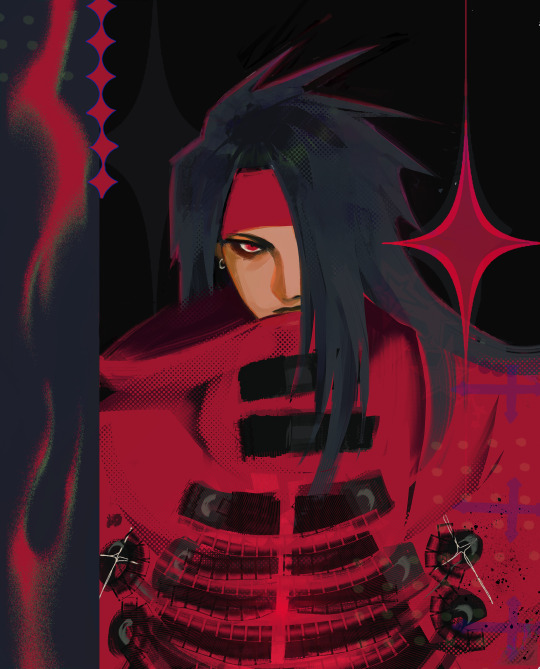#children fantasy
Note
Long ask. Bear with me, please.
I'm still thinking about what counts or not as a fairy tale.
To be honest, I think the only pre-requisites for something to become a fairy tale in pop culture is for it to be a popular fantasy children's story in public domain. And kinda look like a fairy tale, too.
In your opinion, which work would be considered a fairy tale if it weren't for copyright?
Let me give, my examples
C.S. Lewis' Narnia books, especially the first one, The Lion, the Witch, and the Wardrobe. If Alice in Wonderland and Wizard of Oz are considered fairy tales, especially in crossovers, Narnia should be too as it shares many themes, plot points, and character archetypes.
Charlie and the Chocolate Factory. It literally uses all fairy tale archetypes and cliches under the sun, even if it ditches magic for extremely soft sci-fi. Willy Wonka is like Frau Holle or that fairy godmother from Toads and Diamonds, the four brat children are like those siblings and step-siblings who are always magically punished, and even as a child I knew Charlie Bucket was Cinderella but with no focus on romance. He's the youngest sibling that always is magically rewarded.
It is quite funny because I had the idea to make a post about this subject specifically! But since you asked I'll drop some elements of my planned posts here - it can be a good introduction!
Now if you ask me, "fairytale" can't be everything and anything, but that's probably because I come from France where "fairytales" are literaly a literary genre first, and then a category of folktales and legend, and we have specific categorizations different from other countries (again, the merveilleux/fantastique divide for example which determines the French approach to supernatural and fantasy, but is absent from English literature if I am not mistaken).
I... personally do not believe any "popular children story" would be a fairytale. Else that would make the first Harry Potter books a fairytale, or the Winnie the Pooh stories a fairytale or Despicable Me or the recent musical Troll movies fairytales. I think the inherent decision to make something "for children" fairytale like is bad because, again, fairytales were not originally meant for children and thus should not be limited to a child audience.
From my point of view, a fairytale needs to be either a folktale that hold itself in a specific format that makes it separate from legends and myths (the type of local folkloric stories told by old storytellers to children in the countryside for example - but with a clear plot, clear characters, and beginning and ends, separating it from vague legends ; and with a minimum religious element, to separate it from myths for example). I do not like to think of Greek myths as "Greek fairytales". For example, to take an example of the folkloric fairytales of France vs the legends: we have in Bretagne the belief in "les lavandières de nuit", "the night washer-women", ghostly, otherwordly apparitions of women washing clothes at night, and you should never help them else you'll end up dead or with your arms broken. If someone simply tells you what I told you above "It is said there are ghostly women who wash linen at night...", this is more of a "legend", like ghost stories, or "Oh, this is a fairy mound haunted by fairies!" or "It is said a monster lives in this cave". But if you actually tell the story of a specific peasant boy with a specific name, who due to specific reasons ends up meeting these women, and either escapes or falls to their fate, we already are closer to the folktale and thus the "fairytale of Bretagne". But this is all obvious, as these kind of fairytale-folktales were those collected by Grimm and Jacobs and Moe and others...
And then you have literary fairytales, which are stories meant to evoke or imitate the folktales described above, and can derive in many ways (be more "literary") but still identify or present themselves or link themselves to these folktales. These are the Perrault and d'Aulnoy and Andersen fairytales for example. This category can be pushed further with what we call in French "contes détournés" - you could call them "fractured fairytales" to take back a common English term, that is to say all the parodies and rewrites and deformations of fairytales, sometimes for humoristic effects, other times not. Modernization and expansion of fairytales are part of that, so to speak. But we stay in a domain where the story is presented or follows the code and format of fairytales, while also explicitely avoiding, pointing out or reversing the common tropes and rules.
But where the Narnia books and the Dahl books enter, we reach a domain that is not fully fairytale but rather a crossroad between three genres deeply intertwined. "Fairy tales" (or rather "modern fairytales") ; "Fairytale-Fantasy" and "Children fantasy".
Children fantasy is basically any modern children story (by modern I mean deliberately fictional and written as fiction) that involves magic and the supernatural. And these stories can be influenced by fairytales, since it is something children are very aware about, but not always. Peter Pan, just like the Oz books, are "children fantasy" - a form of fantasy for children primarily, or rather a form of children stories that step into the fantasy realm. Pinocchio is one of the oldest "children fantasy", as in a work primarily aimed at children, but with magical and fantastical elements in it.
"Fairytale-fantasy" however is a term usually given to a subgenre of fantasy works that, instead of taking inspiration from epic sagas (epic fantasy) or horror works (dark fantasy) or other things ; takes inspiration from fairytales and folktales. The same way Tolkien was the father of "epic fantasy" he was also the father of "fairytale fantasy" through his Hobbit novel, and also other works (his Tom Bombadil poems, his Farmer Gilles of Ham novel).
The thing is that "children fantasy" and "fairytale fantasy" are deeply interconnected since both can draw source from fairytales and folktales to build entirely new stories. As a result there is a frequent overlap. The Oz books belong as much to "children fantasy" (one of the biggest success in terms of magical series of children-book) as "fairytale fantasy" (they were a pure deconstruction of typical fairytales, explicitely playing with fairytale codes, and later becoming an "American fairytale" classic). The Narnia books are also part of this crossroad, as they are "children fantasy" (they are a traditional fantasy story with epic tones, but for children and teenagers), while also being "fairytale fantasy" (taking inspiration and paying homage to several fairytales and folktales). They all belong to this category of works which are not fairytales per se (since they are not of folkloric origins, nor were they meant to be faithful rewrites or perfect pastiches of traditional folkloric fairytales), but definitively works of fiction based upon fairytales, inspired by fairytales, and mant to take fairytales into the "next step" of the world of fiction.
The main difference between "children fantasy" and "fairytale fantasy" would be as such. Children fantasy, while sometimes inspired by fairytales, is not always tied to fairytales and can be completely fairytale free. For example many of Roald Dahl stories do pay homage to fairytales and are inspired by his fairytales (his witches in The Witches, his giants in THE BFG, Wonka and his factory, the Giant Peach, etc...), he is part of the "writers of modern fairytales". But you have also lot of children stories with magic that do not involve any fairytale reference. Children fantasy can be inspired and allied by fairytales, but is not defined by them.
On the opposite side, "fairytale fantasy" is defined by fairytales - but not by age. Yes some of the most famous "fairytale fantasy" works are for children: the Oz books or the Narnia books. But just as many are for adults and definitively not for children. Neil Gaiman wrote a Coraline for children, but his Stardust is definitively for adults. The movie "Legend", while one of the most iconic fairytale-fantasies, is for adults.
So, I think the real way to point out what a fairytale is, is to look at the format and intentions of the author and of the work, to see if it fits the literary fairytales of old. There needs to be a conscious emulation, pastiche or imitation of traditional fairytales, there needs to be something that make it feel like a fairytale, and not like a story inspired by fairytales. But honestly... this is deep down really, really hard to draw a line as it mostly comes to personal definitions and appreciations. The genre of fairytales is vast and blurry, as it covers traditional European folktales and a specific short literary genre first, but was then expanded to cover other literary works and non-European folktales - and so the lines are... muddled.
I do not hesitate to say that "Over the Garden Wall" is actually a modern fairytale, as seeing the show made me literaly feel again the same kind of feeling I had when I first discovered fairytales. But I can understand why people would consider it "fairytale fantasy" rather than a "modern fairytale" because it was made with the intent of it being a children show and fantasy show first and foremost. Dahl stories are definitively "modern fairytales" - but the fact they are set in "modern day" and a grounded reality where the supernatural is not supposed to exist can disqualify them from being traditional fairytales ; or the humor and parody and play with the fairytale codes can also create a distanciating humor that make them fairytale subversions or pastiches or parodies rather than fairytales. Pinocchio has everything that fits a literary fairytale - but its format also evokes old "story-cycles" like the Reynard adventures or Gargantua ones, and its lack of simplicity and uniformity, or rather its long, flowing nature can also disqualify it from being a fairytale and rather make it a fairytale-inspired fantasy....
Honestly the narrowest definition you can have of "fairytale" is: printed works that explicitely designate themselves as such, from collected folktales (Grimm) to literary fiction written to emulate and imitate them (Andersen). This is the most narrow definition you can have. But then, one can expand to include all folktales that inspired fairytales ; or on the other side, one can push into the literary direction, to include stories that do not have the fairytale format, but that were so heavily inspired and shaped after fairytales, and gained such a popular influence and widespread presence, that they became "modern fairytales". But then this also opens the door to questions such as "What is a myth?" or "What about literary myths?" (like Faust or Don Juan or Frankenstein, all those famous "literary myths" as we call them in French).
As you can see by this convoluted answer, it is not a clear-cut question and nobody can truly answer it. Everybody will have a different opinion, and there is no real limit. The question mostly defines in how the work label itself. Perrault and Grimm and Andersen works called themselves fairytales, so there is no doubt about it. But take Neil Gaiman's Stardust - an iconic of fairytale fantasy, and yet Gaiman refers to it as a "romance in Faerie", evoking more the genre of fantastical and supernatural romances (medieval-meaning of the sense) like "The Well at World's End" and others - and the work is also very inspired by fantasy fae stories with a vague proto-urban fantasy feel to it, like "Lug-in-Mist". Same thing with the movie "Legend" which is definitively inspired by fairytales and a fairytale-fantasy, but was sold as a "fantasy movie" or even "heroic fantasy" movie first and foremost. Meanwhile the Oz books were intended by Baum to be a "modern, American fairytale" - even though their novel format and their franchise nature removes the idea they can become as "traditional" as the folktales he meant to imitate...
I'll stop there for now, but long story short: It's complicated, and when in doubt, don't hesitate to refer to intermediary terms like "children fantasy" or "fairytale fantasy", which clearly evoke modern fictional works and can highlight a difference with classic literary fairytales or folkloric fairytales, without rejecting the idea these "modern fairytales" aren't fairytales in their own right.
#question#fairytales#what is a fairytale#fairytale fantasy#children fantasy#literary fairytale#folkloric fairytale#i honestly don't know what i am writing
12 notes
·
View notes
Text

i imagine this is how remake part 3 is going to start.
#fanart#comic#short comic#final fantasy 7 rebirth#final fantasy series#ff7#final fantasy 7#final fantasy vii#final fantasy fanart#final fantasy fandom#ff7 cloud#cloud strife#sephiroth#ffvii fanart#ffvii#final fantasy#final fantasy vii remake#final fantasy 7 remake#final fantasy rebirth#ff7 rebirth#ffvii rebirth#final fantasy vii rebirth#ffvii remake#advent children
12K notes
·
View notes
Text
OoOoo… Better beware!!

#otgw#otgw beast#otgw art#otgw greg#otgw wirt#tavern keeper#over the garden wall#over the garden wall fanart#wirt over the garden wall#greg over the garden wall#character art#drawing#digital drawing#illustration#digital art#illustrator#fanart#childrens illustration#fantasy illustration#cartoon fanart
11K notes
·
View notes
Text
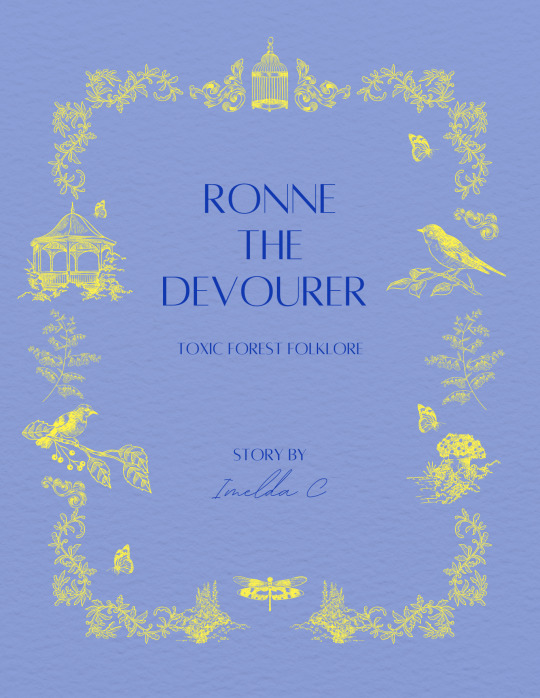
In the realm of desolation and sorrow, a tragic figure named Ronne was born, emerging from the ashes of a peculiar and loveless pursuit. Destined to a life of solitude, Ronne knew neither love nor happiness, yet contented herself with the company of her own existence and the ashes that birthed her.
As time passed, Ronne thrived by devouring the remnants of objects and lives consumed by the fiery breath of a dragon. With each feast, she grew in stature and strength, unable to articulate in words, only capable of growls and primal gestures, resembling a feral creature.
Fearful of the dangers that lurked beyond her limited domain, Ronne confined herself to the confines she knew, believing that venturing too far would only invite her own demise. However, fate intervened one fateful day when an older woman discovered her presence. Filled with compassion, the lady offered Ronne care and companionship, hoping to bring warmth to her cold existence.
But Ronne, shaped by a lifetime of isolation and bitterness, greeted the lady with hostility, sinking her teeth into her fragile flesh. The taste of blood awakened a dormant ferocity within Ronne, prompting her to unleash a thunderous roar, resonating with her pent-up rage.
From the vast expanse of the heavens, a dragon descended upon the earth, swooping down to devour the very woman who sought to provide solace to Ronne. The tragedy deepened as the dragon claimed the life of the caretaker, stealing away the sustenance that was meant for Ronne alone.
Enraged and betrayed, Ronne's fury surged, for the food she believed to be rightfully hers had been snatched away by the very creature that now stood before her. Yet, the dragon, steadfast in its dedication, locked eyes with Ronne, roaring in unwavering loyalty.
In response, Ronne released an angry roar of her own, unleashing her defiant spirit. Acknowledging her defiance, the dragon bowed its noble head, presenting a revolting offering—a blob of flesh expelled from its mouth.
Driven by her insatiable hunger and a craving for power, Ronne seized the repulsive morsel without hesitation. In that moment, she became intertwined with the dragon, born from the ashes of its fiery breath and nourished by its saliva and vomit. She became the first human to ride atop a dragon's back, as if hypnotized by the merging of their essences.
Gripped by the enigma of her fate, Ronne ascended to new heights, clutching the dragon's scales. "We are one. Your voice resonates through me," she whispered in awe. Yet, the path of her tragic journey remained a mystery to all. No one could truly discern where the young Ronne had ventured, save for their imaginations, which conjured visions of her soaring through the heavens, a relentless force, forever echoing her fierce roars.
Authors note:
If more than 50 people buy me a one dollar gift card I can afford something really nice a kitchen! Please help the government is focusing on making himself a king of black people.
https://www.amazon.com/Amazon-eGift-Card-Logo/dp/B07PCMWTSG/ref=mp_s_a_1_1?crid=2WNE9RRWS1YZA&keywords=euro+gift+cards+for+amazon&qid=1680379373&sprefix=euro+egiftcard%2Caps%2C222&sr=8-1
My blog: https://inlovewithghost.wordpress.com/
#storytelling#folklore#dragon oc#tragedy#children fantasy#fantasy#historical#no romance#black girl beauty#black girl reader
0 notes
Text
god like. the funniest thing about adaine abernant to me is that she is sooooo petty. she is so deeply capable of being a mean bitch. she used to be chronically anxious but she’s medicated now and that was the only thing holding her back from being born a hater and dying a hater. she loves her friends and the supportive environment that her new family gives her but this is also the same character who at fifteen years old (deservedly) told an incel he sucked multiple times over to his face and sent her sister who sucks to elf prison
#jone.txt#dimension 20#adaine abernant#adaine fundamentally a character who is not committed to being nice unless she likes you#shes great and i adore her. i hope many young children aspire to be like her#this is why she and aelwyn get along now also#she is just so real.#fantasy high#fhjy#d20#500#1k#2k
3K notes
·
View notes
Text
fabian is such a sweetie and he will not convince me otherwise. genuinely there’s no reason for him to make up with gertie bc the rest of them have enough good standing with her to work with her, he fully did that for kristen. the way he approached it too, wasn’t like “oh im gonna get her off my back so we can deal with the honey thing” no it was pure good soul lou wilson shining through fabian going “hey if there’s even a BUMP on this road to love for my friend because of me? i’m repaving the entire fucking street lets go”
#i love my soft boy#why do none of these children know how to express love properly#you’d think they have enough parents with the polycule#fantasy high junior year spoilers#untapped rage#fabian aramais seacaster#fabian seacaster#lou wilson#kristen applebees#gertie bladeshield#kristen x gertie#fantasy high#fantasy high junior year#dimension 20#fhjy#liveblogging#500#1000#1500#2000
2K notes
·
View notes
Text

To wrap up the Fantasy High Freshman Year Minis Auction - thanks to the unbelievable generosity of fans, we were able to make a $185,000 donation to @thepcrf! You can donate yourself using this link: https://pcrf1.app.neoncrm.com/forms/general
For transparency: Took a few weeks to finalize as some auction winners did not follow through with payment. The total revenue generated from the auction was about $217,000, and our costs ran about $35,000 (for labor, materials, and operations). We opted to round down costs a bit.
For more information about advocating for a permanent ceasefire in Gaza, please visit https://www.ceasefire-now.com!
1K notes
·
View notes
Text
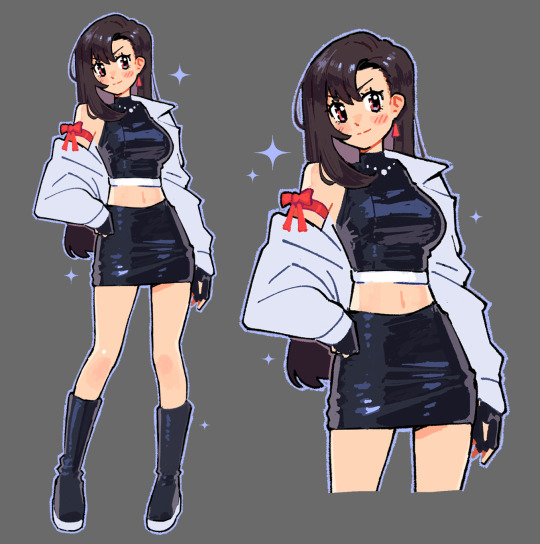
designed an outfit for tifa based on her advent children look!!
#my art#fanart#artists of tumblr#digital art#artists on tumblr#tifa lockhart#ff7r#ff7 remake#ffvii#advent children#leather#final fantasy#final fantasy 7
2K notes
·
View notes
Text

“To all of my children”
Inspired by “Answers” and “Your Answer”. The fight with Hydaelyn makes me cry so much. I love how Endwalker reveals deeper meanings to “Answers” and how “Your Answer” echos to “Answers”.
“Has your journey been good? Has it been worthwhile?”
「あなたの旅は、良いものでしたか?」
Glad that I played FF14.
#final fantasy xiv#final fantasy 14#ffxiv#ff14#ffxiv art#hydaelyn#ffxiv venat#to all of my children#HaNe arts
1K notes
·
View notes
Text
Pack dynamics for domestic urban fantasy werewolves:
● They're never exclusively werewolves. Werewolves have a habit of aggressively adopting everyone they are fond of and when you've won the trust and affection of one, the rest come along in a package deal.
● They're territorial in the protective sense. No trouble in our neighborhood. No hunger in our houses. No fear on our streets.
● They hold grudges. Shopkeeper overcharged one of the pack members in their store? None of them will shop there again. Restaurant owner yelled at one the cubs who got a job there washing up? They've just lost all their hungriest diners.
● Young werewolves think the word "pack" is way too old fashioned and prefer words like crowd, crew, fam, and swarm. ("Honestly, honey, swarm? What are we, pigeons?")
● They're nosy. The upside is no one with a werewolf pack to back them up will ever be left to fend for themselves. The downside is that everyone is always sticking their hairy noses in.
● They vary greatly in size. In some places, especially more rural ones, it's not uncommon to find entire villages that are basically one pack. In other places they might only have a dozen members, scattered about. And many packs start with a set of two or three going somewhere new to build a life and a community.
#werewolf#werewolves#If I could have a year off work I would write a children's series like The Little Vampire#but with werewolves#urban fantasy#laura tumbles
3K notes
·
View notes
Text
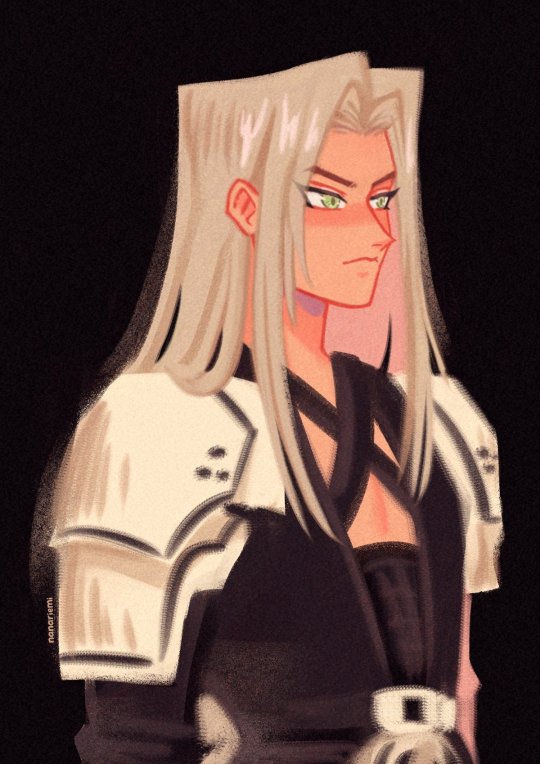

my little meow meows (they can beat my ass in a fight)
#finalfantasyvii#ffvii#ff7#ff7 remake#ff7 rebirth#advent children#artists on tumblr#digital illustration#my art#sephiroth#final fantasy 7#cloud strife#ff7 cloud#ff7 sephiroth
2K notes
·
View notes
Text
Fantasy Guide to Royal Children - Heirs and Spares
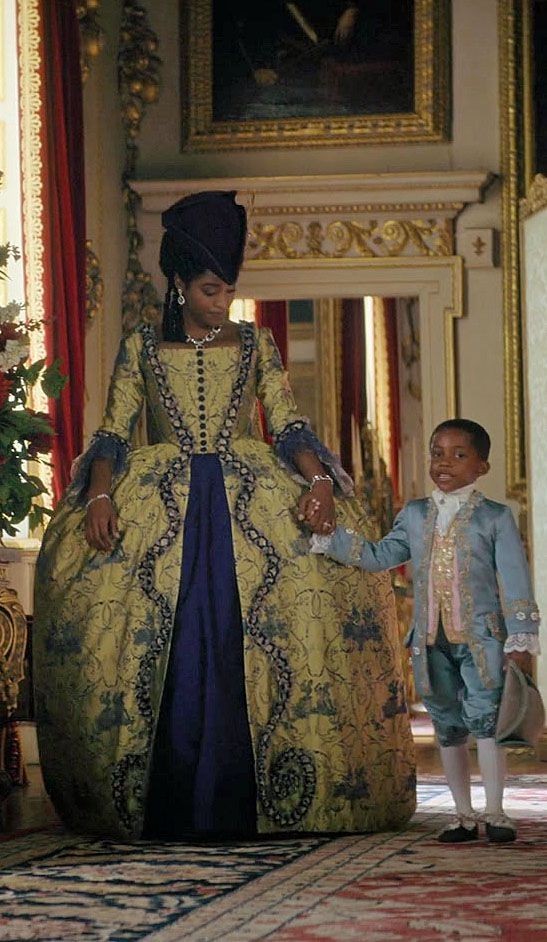
The lives of Princesses and Princes are of interest to most fantasy writers, it's where many of our heroes, side characters and antagonists hail from. But what is there life like? Is it always ballgrowns and servants? Or something more?
A Strict Order of Precedence

The first thing to know about royal children and siblings is that there's a very strict precedence of importance. Is it fair? No. But this is a system, it doesn't have to be fair. The heir comes first without argument. They are the most important child, they are always greeted first, they are the one to stand next to the monarch or their parents at occasions, they literally go first - and this doesn't change with age, if the heir is the youngest, they still have precedence over their siblings. After the heir, order of predence goes by age and the order effects the life of the children. For example, the older sister will marry begore any of her sisters. This order of deference will be so engrained in your character's life that they will believe it the norm and rarely question it, it probably won't spark any in-fighting.
Accommodation & Staff

Royal children are usually raised one of two ways. Either they are raised at court, in the same Palace as their parents or they are raised away from court under the care of trusted servants. Being raised away from their parents isn't a sign of remoteness or dislike or terrible parenting, it was a way of break a child into the constraints of royal life while giving them freedom of scrunity or danger. Usually these children are raised in the countryside for their health, as cities are usually cesspits for disease. Their parents would come to visit them or allow them to visit them at court. Children raised at court are raised with a higher level of scrunity and attention. They will be in the public eye.
Royal children will always be surrounded by staff. There will be nurses to wash and dress them, nannies to discipline and direct them, guards to protect them and usually, a guardian known as a governess to run their household and care for their needs. Staff are not allowed to hit royal children and must obey their commands. Some royal children were very close to their staff:
Kat Ashley and Elizabeth I
Baroness Lehzen and Queen Victoria
Klementy Grigorievich Nagorny and the Tsarevich Alexei Nikolaevich
Lala Bill and Prince John
However, some royal children faced neglect from their staff. George VI was abused by his nanny, who would pinch him during important occasions, openly favour his elder brother over him and deny him food, which many have been a cause of his speech impediment. After the Russian Revolution, another of the Tsarevich's nannies proved less loyal than the other. Andrei Yeremeyevich Derevenko abandoned his charge, but not before ordering the boy around and insulting him.
Day to Day Life

Royal children would be educated withing their home by tutors. They would usually take lessons all together (the heir may take other lessons). A royal child would recieve an education in languages, arithmetic, geography, etiquette, dancing, music, sports such as riding and literature. Sometimes they would even share lessons with the children of trusted nobles or their cousins. Only the heir will be taught statecraft and how to reign. There is no rhyme nor reason a spare would learn how to rule.
Some royal children are taught the value of their position. Many royal children will be raised strictly to adhere to their social standing and their place in it. Some children may be raised in isolation, kept from mingling and raised to think of themselves as higher than those around them. Some royal families preferred to raise their children as "normal" as possible. The last Romanov children slept in camp beds, with no pillows and we're expected to tidy their own rooms and help the servants. They didn't even use their proper titles, they were called by their names and given a tight monthly allowance to spend. Alexandra of Denmark and her sisters used to make their own clothes. Some royal children could even be encouraged to play with the children of servants and staff as well as nobility (Kolya Derevenko and Tsarevich Alexei Nikolaevich, Winifred Thomas and Prince John). Companionship was a great honour for noble and common child alike as sometimes, they would be invited to live or be educated alongside by the royal children.
Royal children will not undertake royal duties until they are of age. Younger children be be present for large scale events such as jubilees but would not be expected to partake in any duties themselves. When they are of age, they will usually be granted an annual allowance, be invited to social events, invited to be patrons of charities and participate in royal duties.
Heir Vs Spare
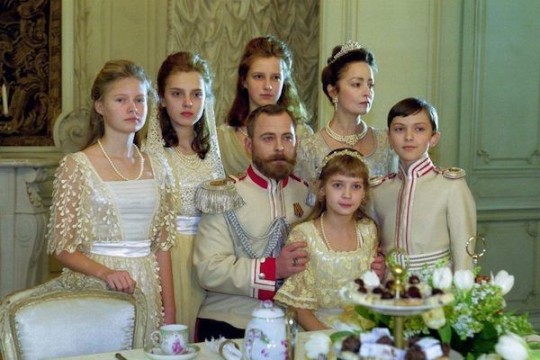
Heirs have more responsibility, all the prestige, more power but they have less freedom, less room to explore their own lives and be expected to always be the epitome of perfect. Heirs will be given responsibilities in government, sitting in on state meetings or undertaking state duties.
Spares have little in the way of real power but have the ability to live less regimental lives and gave more agency in their personal lives. Spares may act as ambassadors to other nations or undertake state visits on behalf of the monarchy or even take positions in the army. Spares are encouraged to find positions to support themselves outside the family, either in a marriage or undertaking some service to the country. Spares who stay in the country, tend to act as unofficial advisers to their sibling when they become monarch.
All Grown Up

When royal children grow up, there are usually certain expectations and limitations.
Heirs will be married quickly, the lineage must be secure. Heirs will usually marry either as part of a political alliance or marry somebody suitable - from a good family, the right background, and able to fit into a certain mould (i.e malleable, amiable and loyal). They will be expected to focus on the country, it's needs and support the monarch at all times. Their social circles will be scruntised, their every move will be noted and remarked upon. Heirs will never gave to worry about funding their lifestyle, the Crown is their job and it supports them.
Spares can marry or remain single if they choose, (but if the monarch instructs them go marry they must). Spares can travel, they can be idle, they can even persue amusements not permitted for the heir. Spares can win glory on the battlefield and mix with all sorts of people. That isn't to say spares are useless, spares often occupy very important spaces in society and government. Spares will usually take these positions not for just status but also for the pay. This is why spares are granted royal titles such as dukedoms (they can make money off the lands, be able to build a dynasty for themselves and their heirs and gain status).
#Fantasy Guide to heirs and Spares#Fantasy Guide to Royal Children#Fantasy Guide#write#writing#writeblr#writing resources#writing reference#writing advice#writers#writing advice writing resources#spilled ink#Writing reference writing resources#Writing resources writing reference#Writing advice writing reference#Writing advice writing resource#Royal children#Writing royal characters#Royalty#Writing royalty#Writing royals
2K notes
·
View notes
Text

Pixie princess*.✧
I think Ryne would become one of the pixie's favorite humans
#wow a background!#didnt even use screenshots of il mheg for reference. insane of me#this was very fun to draw!#tried for a childrens book illust kinda vibe#lots of work. fun tho!#ryne waters#tyr beq#an lad#final fantasy#final fantasy xiv#final fantasy 14#ff14#ffxiv#art#my art#xanders art#digital art#fan art
2K notes
·
View notes
Text
Sharing some rock facts

#greg over the garden wall#otgw greg#greg otgw#otgw#otgw fanart#over the garden wall fanart#over the garden wall#character art#drawing#digital drawing#illustration#digital art#illustrator#character design#fanart#animal art#childrens illustration#fantasy illustration
5K notes
·
View notes
Text
“It [The Lord of the Rings] is finished, if still partly unrevised, and is, I suppose, in a condition which a reader could read, if he did not wilt at the sight of it…now I look at it, the magnitude of the disaster is apparent to me. My work has escaped from my control, and I have produced a monster: an immensely long, complex, rather bitter, and very terrifying romance, quite unfit for children (if fit for anybody); and it is not really a sequel to The Hobbit, but to The Silmarillion.”
— J.R.R. Tolkien to Sir Stanley Unwin, 24 February 1950
#LOTR#Silmarillion#Tolkien#quotes#Tolkien I love you so much#*writes a book that becomes known as the pinnacle of the fantasy genre* “this is a disaster”#“quite unfit for children (if fit for anybody)”#how do I communicate to Tolkien's ghost that LOTR and the Silmarillion are both my favorite books?!?!?
3K notes
·
View notes
